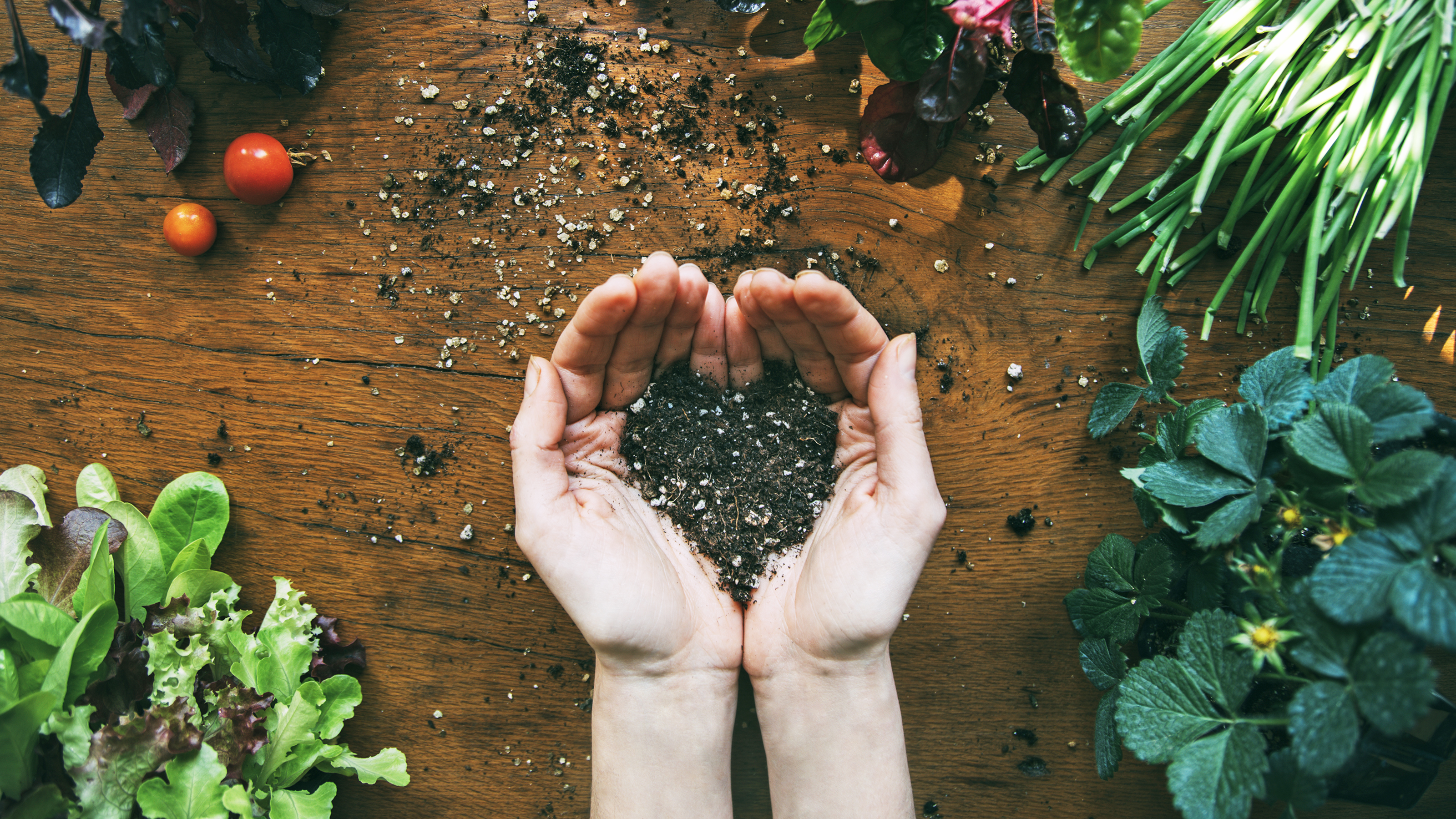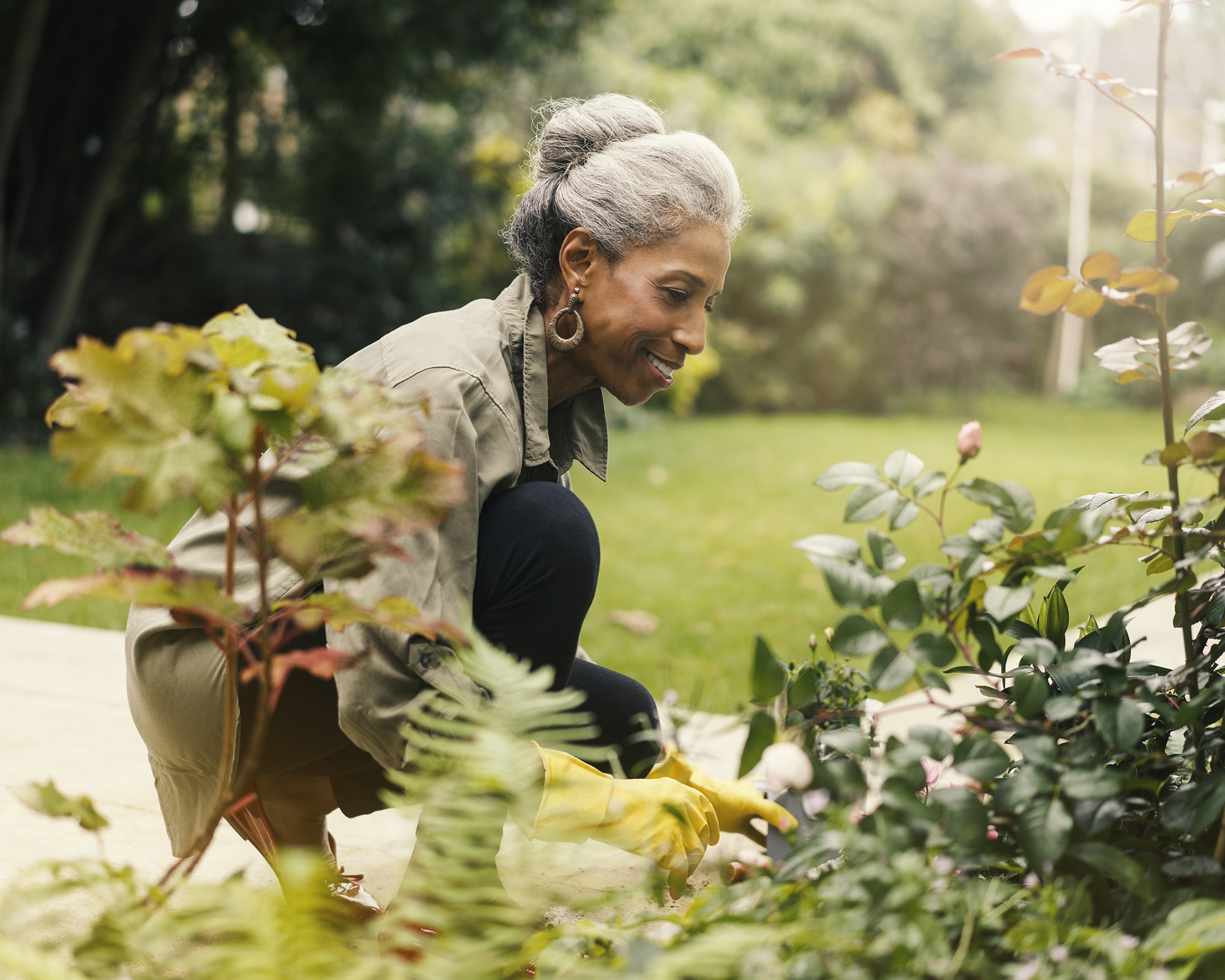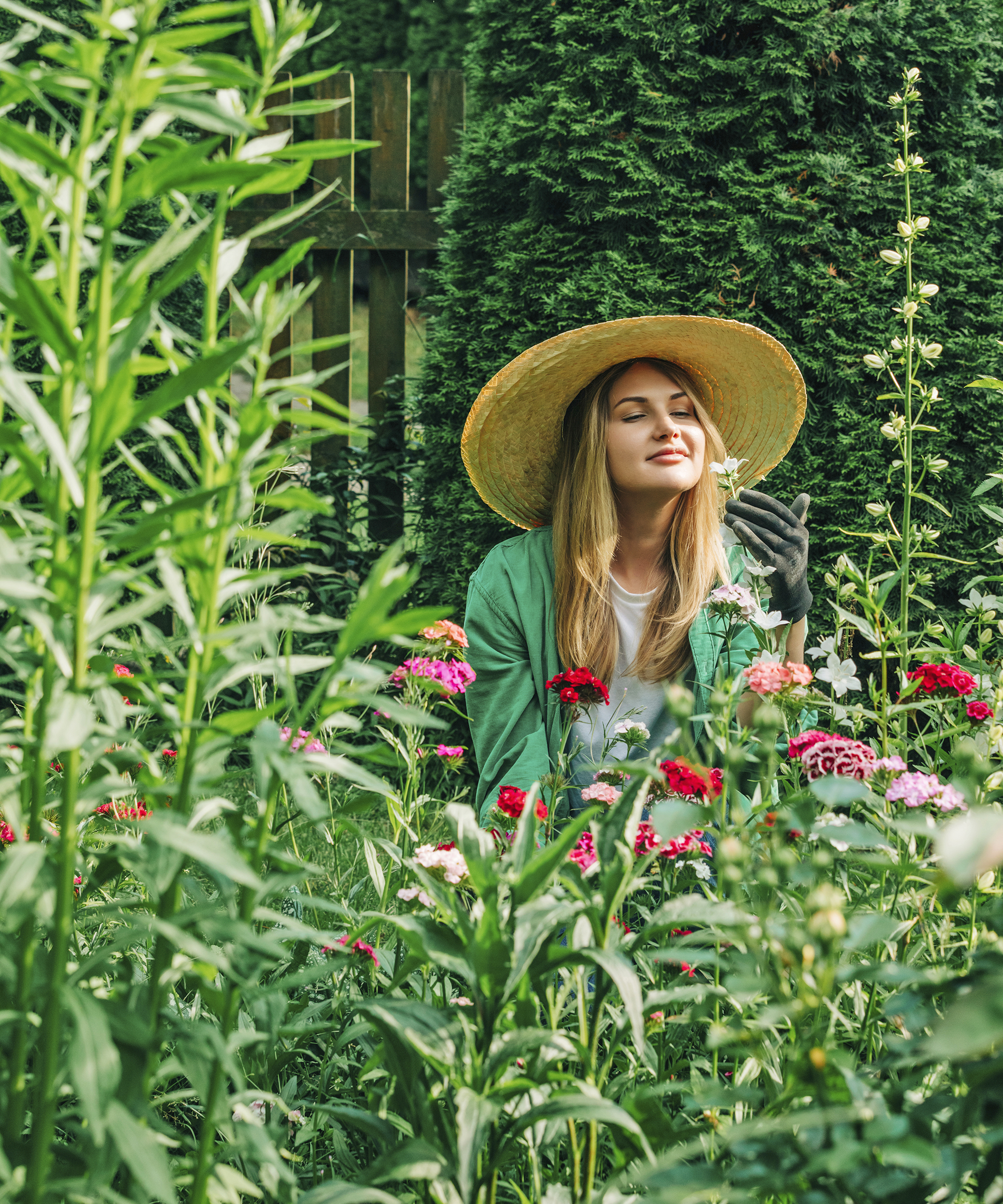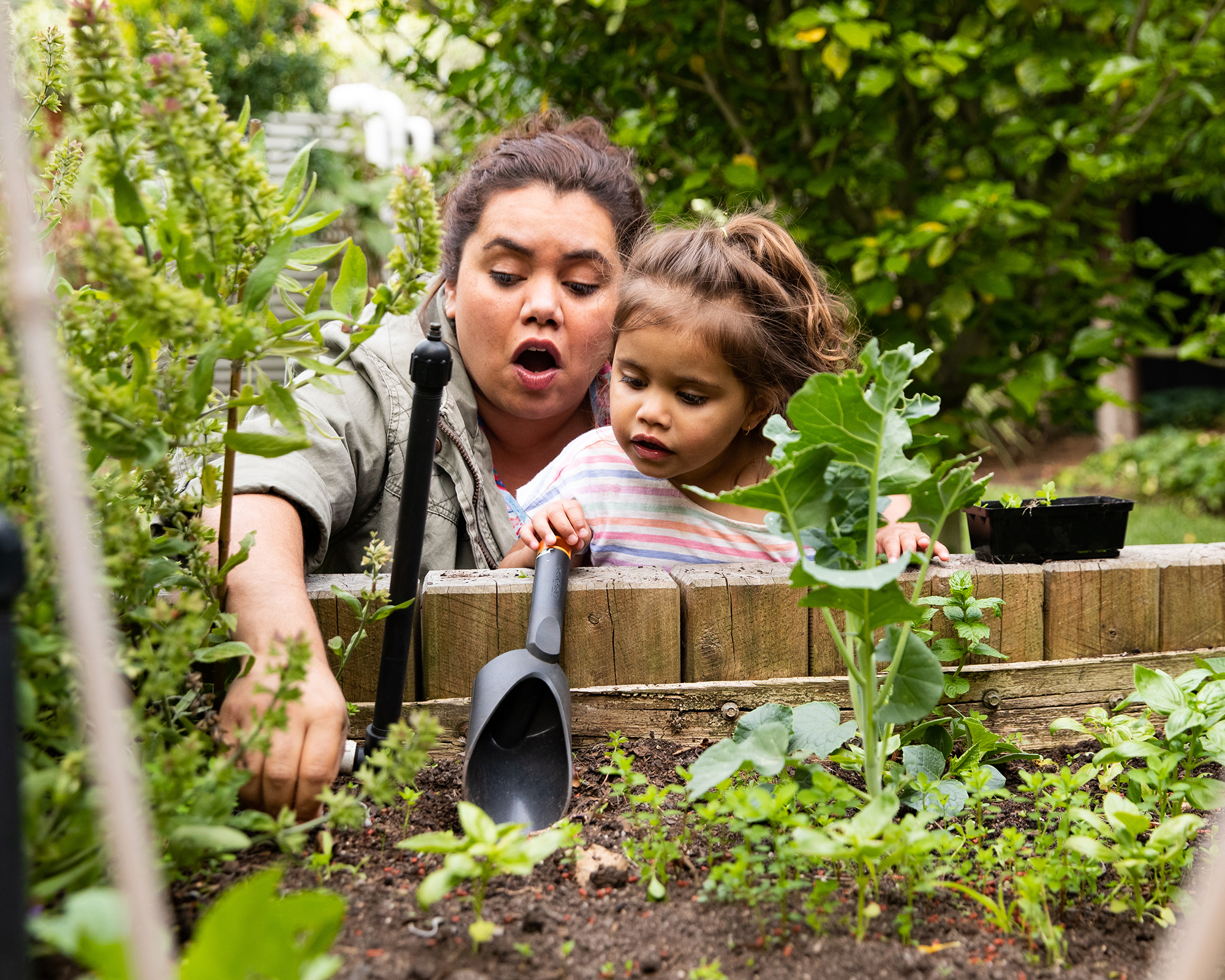5 Health-Boosting Gardening Habits You Need To Adopt
Make these simple changes to your gardening routine to improve your health, wellbeing, and overall quality of life.


It’s no secret that gardening is good for your health. Regular gardeners not only burn a lot of calories doing what they love, but they enjoy a range of psychological benefits too.
As well as being a natural blues buster, gardening relieves stress and improves cognitive abilities.
However, just a few small changes to your gardening method will maximize the health benefits to your mind and body. Adopt these simple habits and enjoy a transformative effect on your quality of life.

1. Garden little and often
Gardening for exercise is a fantastic way to keep fit. All that mowing, weeding, digging, raking, and pruning works every major muscle group and burns around 300 calories an hour.
However, allowing maintenance work to build up and then tackling it all in one weekend is exhausting, and quickly zaps enthusiasm.
Repetitive bending, lifting, and stretching also places a lot of stress on the body – in particular the back and knees – potentially leading to injury. This makes it so important to maintain healthy gardening practices.
Instead of spending long sessions working on the garden, make a habit of doing it in smaller chunks at a set time on each dry day. Just aim to prune a couple of shrubs, deadhead the flowers, or tackle a small section of weeds.
Sign up for the Gardening Know How newsletter today and receive a free copy of our e-book "How to Grow Delicious Tomatoes".
It’s an uplifting way to spend a lunch break if you work from home, or a fantastic stress reliever at the end of a busy day.
Just spending 20-30 minutes of gardening every day will allow most people to keep on top of essential gardening work, while providing a regular workout. It’s certainly a lot cheaper than going to the gym!
To avoid injury, before starting gardening work, take a few minutes to warm up and stretch out.

2. Get your hands dirty
Did you know that soil is a natural antidepressant? Mycobacterium vaccae is a bacterium found in soil that has been found to stimulate serotonin production.
This makes you relaxed and happier, and mirrors the effect on neurons that drugs like Prozac provide.
Of course, many gardeners already know the uplifting effect of getting your hands in the dirt. However, scientific studies have found the bacterium contributes to improved cognitive ability, lower stress, and better concentration on tasks.
To get the benefits of Mycobacterium vaccae, you need to work closely with the soil. You needn’t ingest it, but should have topical contact with it by working the soil with your bare hands. Get close enough to inhale its scent.
Doing this will also make you a more skilled gardener, as you will get to know what soil feels like, and begin to notice when things are different.
However, when pruning it’s always a good idea to wear protective gloves, as cuts can cause harmful bacteria to enter the bloodstream.

3. Take time to savor it
Gardening has a powerful effect on mental health and wellbeing. But to really reap the benefits, you have to take the time to drink it all in and allow yourself to feel closer to nature.
It sounds obvious, but there is a big difference between experiencing your garden passively and actively partaking in its restorative powers.
Take inspiration from sensory gardens and explore every sense – there is so much more on offer than just a visual banquet.
When you’re out in the garden, remember to pause and close your eyes, so you can listen to birdsong, bees buzzing, and water trickling.
Add to nature’s symphony by installing bird feeders, choosing pollinator-friendly plants, and installing a water feature.
Take time to enjoy the fragrance of herbs and flowers, as they will stimulate the senses. Consider this in your garden design by positioning scented plants where they can most be appreciated: plant lavender along a pathway; climb a perfumed rose above a garden bench; hang a basket of petunias next to the front door; or add a container of daphne to the patio.
Don’t wait to harvest all your edible plants in one go – pop a raspberry or green bean in your mouth, or chew on a mint leaf as you potter around.
Spend a moment noticing different textures – brush past a leafy shrub, and run your fingers down textured tree bark.
Get into the habit of spending a few minutes savoring your garden each day, and see how quickly it transforms your sense of wellbeing.

4. Stop reaching for the chemicals
Growing an organic garden is better for you and the planet. It reduces the amount of chemicals in the soil, which harm wildlife and disrupt the biodiversity of your garden.
We often think of organic as being related to crops, yet there are so many chemicals used in ornamental gardens and lawn care. It’s all too easy to reach for the weedkiller or pesticides when there is a problem, but it’s much healthier to get into the habit of using natural solutions.
Going organic is much easier than it sounds and requires no special equipment. The difference is in the products you use for fertilizer, and pest and weed control.
Compost is an essential component in the organic gardener’s toolkit. Mixing compost in with soil enriches its nutrient content and minimizes the need for additional fertilizing.
Organic compost can be purchased at garden centers, but many gardeners prefer to make their own compost using waste from the home and gardening work.
Green manure cover crops can also be planted prior to spring sowings. They are cut and plowed into the soil, into which they inject a huge nutrient boost.
Beneficial garden friends, such as earthworms and pollinating insects, are to be encouraged to the organic garden, which should provide a safe haven. Consider adding more worms to the soil, and building a bug hotel.
One of the best ways to nurture wildlife is to eliminate the use of chemical pesticides and herbicides.
Rather than relying on weedkiller, remove weeds manually, and apply mulch to exposed soil to minimize their regrowth. To reduce pests, diseased plants must be removed, and nets and barriers can be added to protect crops.
Deterrent companion plants can be positioned next to vulnerable plants, and natural homemade remedies will help keep pests to a healthy level, rather than completely eliminating them.

5. Maximize grow-your-own opportunities
People who grow vegetables and fruits are more likely to eat plenty of them – and that enthusiasm extends to the younger generation too.
Children will get much more excited by healthy food when they have had a hand in its cultivation. It’s also a powerful learning exercise, increasing scientific knowledge about plants and nutrition.
If you haven’t yet forayed into kitchen gardening, then start with some of the easiest vegetables to grow, such as green beans, tomatoes, peppers, salad leaves, and spring onions.
You don’t need a lot of equipment to get going – some packets of seeds and perhaps a few grow bags will suffice. If you’re short on space, you can even grow vegetables indoors in pots.
If you already grow your own produce, then get into the habit of maximizing productivity: investigate the best second crops to extend the growing season in the same spot; use smaller plantings to fill the gaps in between bigger plants; add more containers to the patio; and practice succession planting to ensure a steady supply, rather than one bumper harvest.
Just a few adjustments to your growing habits will improve the diversity of what you grow and boost your gardening’s growing potential.

Melanie is an experienced gardener and has worked in homes and gardens media for over 20 years. She previously served as Editor on Period Living magazine, and worked for Homes & Gardens, Gardening Etc, Real Homes, and Homebuilding & Renovating. Melanie has spent the last few years transforming her own garden, which is constantly evolving as a work in progress. She is also a passionate organic home grower, having experimented with almost every type of vegetable at some point. In her home, Melanie tends to an extensive houseplant collection and is particularly fond of orchids.